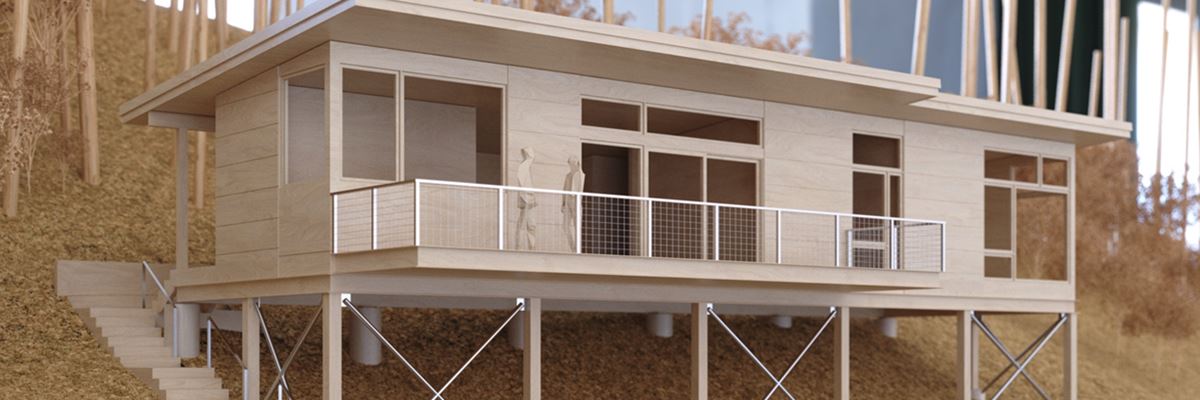Basswood Models
Basswood models have long been used as a versatile and easy-to-use tool for architectural and product design purposes. They have stood the test of time due to their accurate representation of three-dimensional objects. What client hasn’t loved seeing their home jump off the page in 3D?
Digital Modelmaking
While traditional hand-made models have many benefits, they have fallen out of favor. Architects today likely remember the meticulous handiwork required to make a 3D model. It was an art form in and of itself. But with the advancements in technology, there are now much better ways to make your models.
One such advancement is the use of 3D virtual models. These models are not only more accurate than their paper predecessors, but they are also more versatile. You can spin them around, look at them from different angles, and even walk through them. A 3D virtual basswood model is the perfect solution for those who want the accuracy of a traditional model without the hassle.
What are the benefits of a 3D virtual basswood model?
With the advent of 3D modeling and printing technologies, it has become easier than ever to create incredible models without all of the hassle. If you’re looking for a high-quality, low-cost alternative to hand-made models, consider using a 3D virtual basswood model. These models are perfect for view studies, light studies, material studies, and presentations.
Why Choose a Virtual Model?
There are many reasons to choose a virtual model over a hand-made one. First, virtual models are much less expensive. You won’t have to pay for the materials or the labor required to create a physical model. Second, virtual models can be created quickly and easily. You won’t have to wait for weeks or even months to get your model. Third, virtual models are incredibly versatile. You can make changes and revisions with the click of a button. Finally, virtual models can be shared easily with clients and colleagues.
Using 3D Modeling in Your Practice
If you’re an architect, you know that the design process is all about making decisions. Sometimes, it can be difficult to decide which option is best, especially if there are multiple options that all have their own benefits and drawbacks. That’s where a digital 3D model comes in handy. There are tools to make it simple to create basic masses in your own office, or you can hire us to do the heavy lifting in a fraction of the time.
There are many types of models, from the standard clay models we include in almost all of our projects, all the way up to photoreal renderings. A virtual basswood rendering fits nicely in between those options. It gives great visual cues to scale and even includes a nice representation of the landscape.
With this type of model, you can test out different designs and see which one works best before you even start construction. Having a 3D virtual basswood model makes the design process easier and faster, which means you can get your project completed on time and under budget.
The best part of this type of rendering is it is easy to modify. And when you’re ready to move forward, we’re already well on our way to a photoreal rendering.
Let’s Talk About Getting You a Virtual Basswood Model
Check out this virtual basswood model. It looks almost like a photograph, but it isn’t. This is a style of 3D architectural rendering that we offer.
We know that you don’t always need a hyper-realistic rendering. Sometimes you just need something to help you evaluate your complicated or non-orthogonal design. And often it’s helpful to have a tool that communicates massing to a client that can’t visualize plans.
In those cases, we have a number of techniques at our disposal. A common tool is what we call clay renderings. You can see more of those here: https://jscottsmith.com/clay-renderings/
In this case, we went for a more traditional look that is a nod to the nearly-forgotten specialty of hand-made physical models. We think this look is a home run! What do you think?


0 Comments